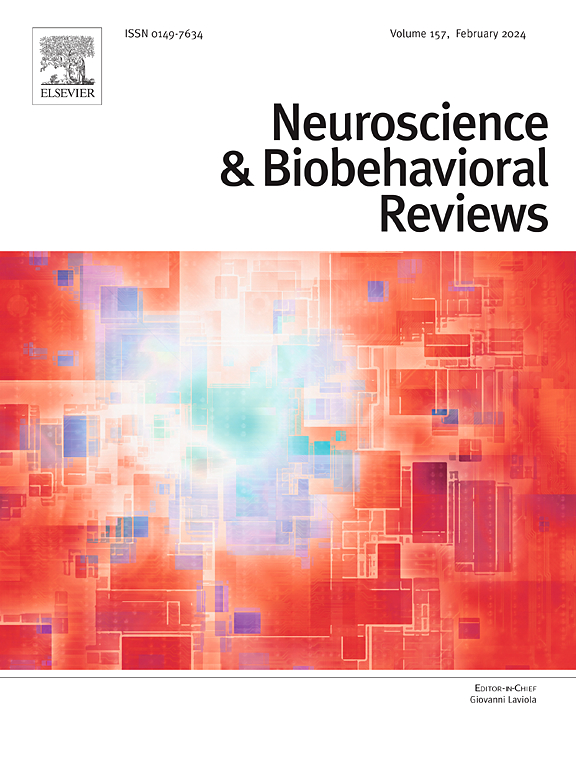历法计算:100年研究的系统回顾。
IF 7.9
1区 医学
Q1 BEHAVIORAL SCIENCES
引用次数: 0
摘要
日历计算是快速回答诸如“1978年5月12日是星期几?”或“哪一年2月15日是星期一?”这种能力被一些“学者”自闭症患者以惊人的速度和准确性掌握。自闭症日历计算的准特异性证明了它对理解自闭症信息加工和学习机制的重要性,并为人类认知的某些极端可能性提供了信息。使用PRISMA指南进行了一项注册(PROSPERO: CRD42021254855)系统评价,生成76篇文章(1920年至2023年),记录了105台计算器(95M)。我们研究了计算器的临床特征,他们的认知表现,发展和行为相关的能力,日历计算的实证研究结果,以及整体可用的脑成像结果在日历任务。我们的研究结果表明,日历计算与自闭症有关,通常是在学龄期以隐性和自学的方式获得的。与其他领域相比,参与者倾向于在他们感兴趣的领域表现出优越的认知能力。当使用标准化工具进行评估时,他们的表现通常落在较低的全面智商范围内。总计算范围在100年以下的占49.5%。距离和启动效应并不一致地显示出表现的可变性。脑成像结果强调了在日历任务中被激活的三个不同的神经网络:记忆、视觉和算术。这些知识使我们能够建立日历计算器的共同特征,并识别与日历计算获取相关的知识空白。本文章由计算机程序翻译,如有差异,请以英文原文为准。
Calendar calculation: A systematic review of 100 years of research
Calendar calculation is the ability to answer rapidly to questions such as "What day of the week was May 12, 1978?" or "For which years is February 15 a Monday?" This ability is mastered by some "savant" autistic people with a surprising level of speed and accuracy. The quasi-specificity of calendar calculation in autism justifies its importance for understanding autistic information processing and learning mechanisms and is informative of certain extreme possibilities of human cognition. A registered (PROSPERO: CRD42021254855) systematic review was conducted using PRISMA guidelines, generating 76 articles (1920–2023) documenting 105 calculators (95 M). We examine: the clinical characteristics of calculators, their cognitive performances, the development and the behavioral correlates to the ability, the empirical findings on calendar calculation, as well as the overall available brain imaging results during calendar tasks. Our findings indicate that calendar calculation is associated with autism and is typically acquired implicitly and in an autodidactic manner, often during school age. Participants tend to demonstrate superior cognitive abilities in their area of interest compared to other domains. When assessed using standardized tools, their performance generally falls within the low full-scale IQ range. 49.5 % had a total calculation range under 100 years. Distance and priming effect were not consistently found showing performance variability. Brain imaging results highlighted three different neural networks that were activated during calendar tasks: memory, visual and arithmetic. This knowledge enables us to establish the common characteristics of calendar calculators and identify gaps in knowledge related to the acquisition of calendar calculation.
求助全文
通过发布文献求助,成功后即可免费获取论文全文。
去求助
来源期刊
CiteScore
14.20
自引率
3.70%
发文量
466
审稿时长
6 months
期刊介绍:
The official journal of the International Behavioral Neuroscience Society publishes original and significant review articles that explore the intersection between neuroscience and the study of psychological processes and behavior. The journal also welcomes articles that primarily focus on psychological processes and behavior, as long as they have relevance to one or more areas of neuroscience.

 求助内容:
求助内容: 应助结果提醒方式:
应助结果提醒方式:


